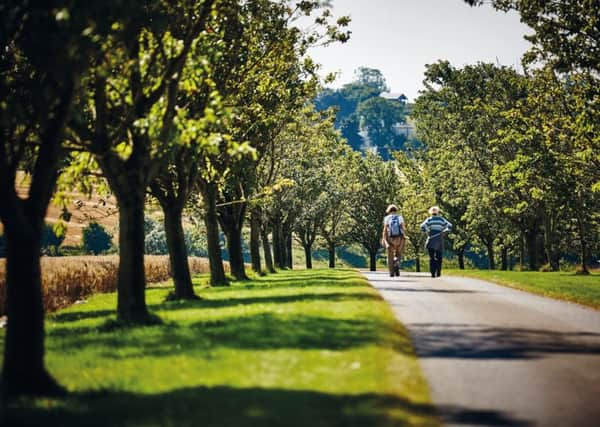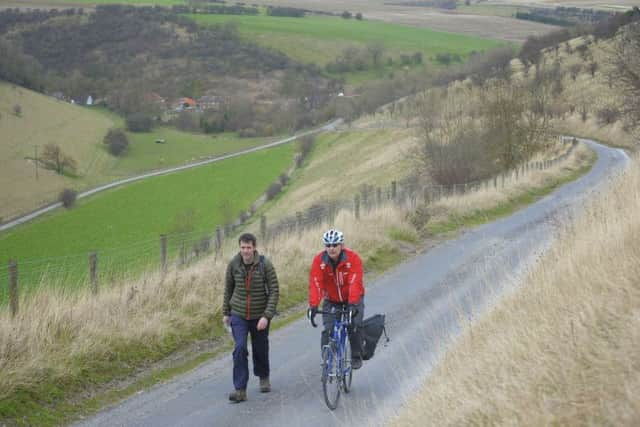Jayne Dowle: Figures that show North is naturally a better place


Although given the context of what I’m about to share with you, he couldn’t have chosen a more appropriate backdrop for his first meeting in Yorkshire last week than Fountains Abbey, a magnificent structure which has gradually returned to nature over the years.
I doubt, too, that what I’ve learned recently would convince all those Southerners who regard ‘the North’ as a backward state to accept that we actually do have more that defines us than flat caps, black pudding and whippets.
Advertisement
Hide AdAdvertisement
Hide AdIt may, however, go some way towards proving that everything is not quite as grim up North as some people clearly think.


You might be wondering what this research could possibly be. Some major new report by an influential think tank perhaps? A thought-provoking survey by a major campaign group or charity?
Well, actually, it was an unsolicited press release from a garden furniture company which dropped into my inbox. Normally, I would just glance at it and move on, but this one caught my eye.
In a courageous attempt to connect the start of spring with the urge to buy new steamer chairs – I think – the company had come up with an interesting line of research which proves that Yorkshire and the Humber is one of the most wildlife-friendly regions in the UK.
Advertisement
Hide AdAdvertisement
Hide AdAnd what was even more interesting (to me, at least) was the fact that Barnsley, my home town, all too often in the news for entirely the wrong reasons, is the friendliest of all to our feathered and furry friends, plants, insects, fish and even worms.
At the latest count there are almost 2,000 (1,778) different species recorded across the borough including skylarks, eels and red squirrels. Our record is followed closely by Bradford, which has 1,550 varieties including 419 different kinds of insects, 130 types of birds, 19 wild mammals and 15 sorts of fish.
The next time you’re stuck in a lift with a Southerner with massive preconceptions, trot out these figures and watch their face fall.
Once you have left them puzzling, you could then compose a spirited defence of our great towns and cities. This might involve a brief history of the Industrial Revolution and the transport networks which brought exotic seeds from all over the world to our roadsides, rivers and canals. You could finish up with the sterling work which has gone on in more recent times to return industry-scarred landscapes to their natural state.
Advertisement
Hide AdAdvertisement
Hide AdYou could also perhaps remind them that the South of England may dominate the national agenda, but it does not have the prerogative on the natural world. Some of the most glorious landscapes in the United Kingdom are here on our doorstep, from the rolling hills of the Yorkshire Dales to the endless skies of the Wolds.
That’s one of the reasons why, according to Welcome to Yorkshire, our tourism industry is worth £8bn and is such a huge driver of employment for our region. It’s also a massive justification for the economic case for One Yorkshire.
Perhaps sometimes we are guilty of taking the beauty which surrounds us for granted. Or never stopping to think for a minute and breathe it all in. Even our busiest urban areas are richer in wildlife, birds and plants than you might imagine.
Random as this may sound, the company hadn’t just made this up to try and sell a few outdoor tables and chairs. The data was taken from NBN Atlas, said to be Britain’s ‘largest collection of biodiversity information’.
Advertisement
Hide AdAdvertisement
Hide AdIt’s run by the National Biodiversity Network, a collaboration which brings together more than 200 charities, voluntary groups and conservation organisations, dedicated to researching and recording nature, and it’s backed by central government and local councils.
What is really fascinating, however, is that you can tap in anywhere in the country on its website – the NBN Atlas also covers Wales, Scotland and the Isle of Man – and find how many species are sharing your neighbourhood space. In fact, you can waste entire mornings comparing Death’s Head Hawk Moths with Prickly Snails.
The NBN’s aim is to educate us about the natural world, and its interactive online map is a tremendous resource. Not just because it is pleasing to see how rich and diverse our urban and rural landscapes are, but because it gives a picture of what our region really is about.
After all, if we are asking others to understand us, we must first learn to understand ourselves. This process is about more than just politics, transport or business opportunities. It’s about the formation of our landscape, the way we share our space with other living, breathing things and indeed, life itself. It doesn’t come more important than that.